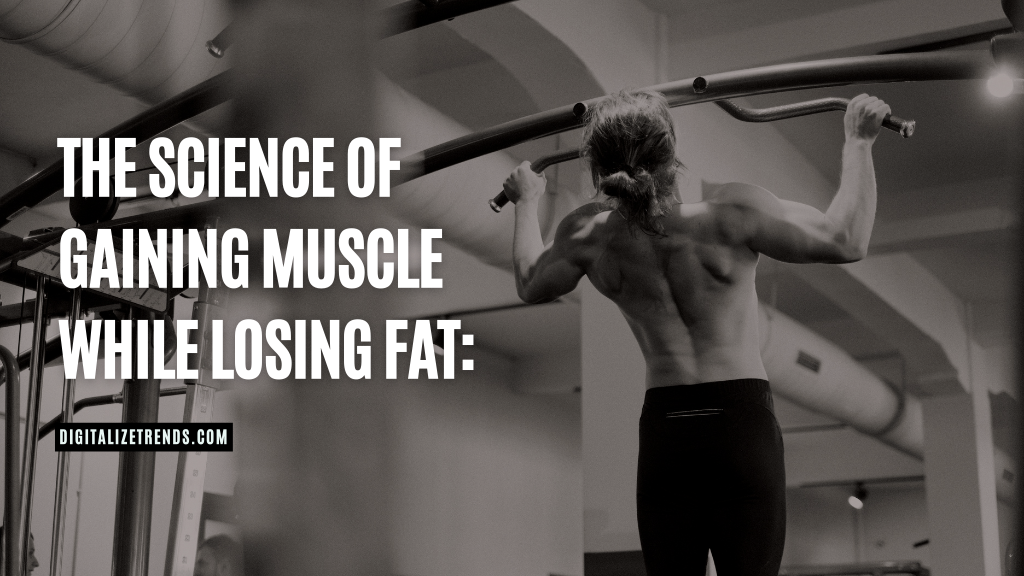Building a strong and athletic physique is often seen as a battle between two contradictory goals – losing fat and gaining muscle. While it is true that these two goals are often at odds with each other, it is possible to achieve both simultaneously. But to achieve this healthily, there are a few things you need to understand.
What is body composition?
In the fitness world, body composition is the ratio of your body fat mass to lean mass. Of the two, fat mass denotes the amount of fat in your body, whereas lean mass is the amount of muscle, bone, water, and other tissues in your body. There are several methods for measuring body composition, but the most accurate methods are Dual-energy X-ray Absorptiometry (DXA) and hydrostatic weighing.
What is body recomposition?
The concept of body recomposition, or body recomp, is often misunderstood as simply losing weight. However, it is actually about changing your body composition by cutting down body fat and increasing lean mass at the same time. This is different from the traditional approach of bulking and cutting, which involves gaining weight and muscle mass intentionally, followed by losing fat by eating a calorie deficit and exercising. While bulking and cutting can be effective for some people, they can also be difficult to sustain and can lead to weight cycling – which results in adverse health outcomes.
How to Reduce Fat while Increasing Muscle
Body recomposition is a personalized process that varies based on your unique fitness goals. However, there are some general guidelines that you can follow to achieve your goals healthily and sustainably.
How to Lose Fat
To lose body fat safely and effectively, you need to understand calorie maintenance. Calorie maintenance is the total calories you need to intake on a daily basis to maintain your current weight. If you want to lose fat, you need to consume fewer calories than what you burn, creating a calorie deficit that prompts your body to burn stored fat for energy.
To safely create a calorie deficit, the best way is to adopt a healthier diet that limits unhealthy carbs, trans fats, refined sugars, and high-calorie drinks. You should also make sure to get all the nutrients your body needs. Research suggests that a calorie deficit of about 500 calories a day is a good starting point for healthy body fat loss – based on the recommended calorie intake of at least 1,500 to 1,800 calories daily for men and 1,200 to 1,500 calories each day for women.
Combining a calorie deficit with cardiovascular exercise can be a great way to lose weight and improve your overall health. Cardio, in short, is any exercise that gets your heart rate up and your blood pumping. It can be zumba, intensive or even a hike – whatever works for you.
How to Build Muscle
Building muscle requires the right balance between protein consumption and resistance training. Protein is often the building block of muscle and it is essential for repairing and rebuilding muscle fibers that are broken down in the course of exercise.
The amount of protein you need to eat for muscle building depends on several factors, including your age, activity level, and fitness goals. However, research suggests that protein intake from 0.5 to 3.5 grams per Kg of your body weight can support a healthy increase in lean body mass. For example, a 180-pound male would need to consume 98 to 131 grams of protein on a daily basis, combined with resistance training to support muscle growth.
Resistance training is one of the most important exercises in developing strength and stimulating muscle growth (muscle hypertrophy). It involves lifting weights or using resistance to work your muscles. This type of exercise helps to break down muscle fibers, which then repair and rebuild themselves stronger than before.
Calorie Cycling
Calorie cycling, or calorie shifting, is a diet pattern where you alternate your calorie intake based on your daily activities. For example, when engaging in an intensive resistance training session on a particular day, you might eat more calories to fuel your body. On rest days, you can consume fewer calories in a protein-rich diet to help your body recover. Or, if you want to lose body fat, you might eat fewer calories on most days and more calories on the days you engage in intensive cardio exercise. This is because cardio exercises help you burn more calories.
Building muscle and losing fat concurrently can seem a daunting challenge, but it is quite achievable. It requires a combination of healthy eating, regular exercise, and calorie cycling. It is important to be patient and consistent with your efforts. Remember, anything worthwhile takes time to achieve.



